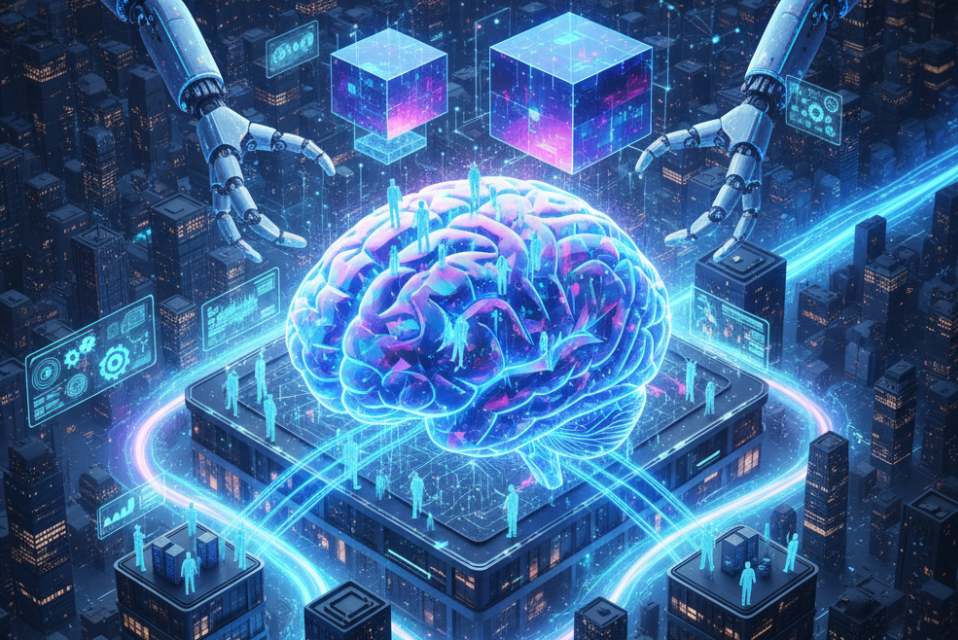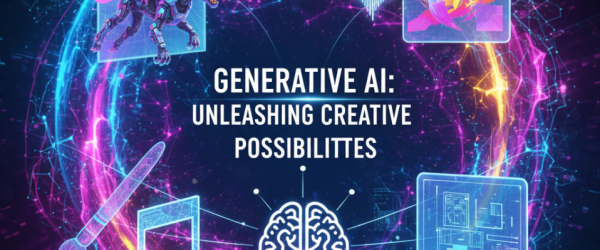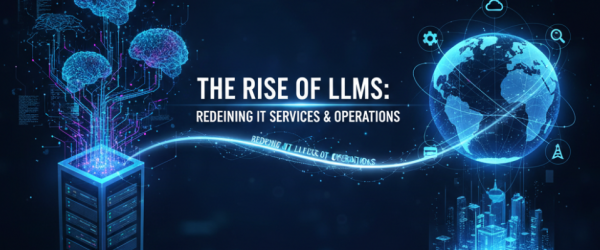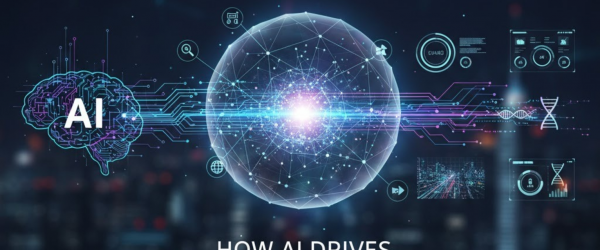Introduction
The narrative surrounding Artificial Intelligence often focuses on replacement: AI taking over jobs, systems automating human tasks. While automation is real, the most profound and valuable transformation happening in the enterprise is the shift from automation to augmentation.
This shift marks the emergence of the Human + AI Advantage—a powerful synergy where the unique strengths of human intelligence (intuition, ethics, emotional context) are amplified by the speed, scale, and pattern recognition capabilities of AI. The result is a Smarter, More Adaptive Organization—one built for rapid change, superior decision quality, and unprecedented resilience.
This convergence is no longer theoretical; it is the strategic imperative for competitive advantage.
1. The Power of Synergy: Why 1 + 1 > 2
The Adaptive Organization operates on the principle that the whole is greater than the sum of its parts. AI excels at processing data at a scale impossible for humans, while humans provide the crucial layer of wisdom, ethical judgment, and context.
- AI’s Strengths: Speed, computation, identification of subtle patterns, execution of high-volume tasks.
- Human Strengths: Critical thinking, domain expertise, understanding of nuance, emotional intelligence, and ethical oversight.
A landmark study by researchers at Stanford and MIT demonstrated this synergy in action: when tasks were split between human workers and AI tools, the human-AI teams solved problems 36% faster than humans working alone, while also producing 10% higher quality outcomes (MIT, 2023). This data proves that the future is collaborative, not competitive.
2. Scaling Decision Quality: From Overload to Insight
Modern enterprises suffer from data overload. IT systems, sensors, and customer interactions generate torrents of information that overwhelm human analysts. This leads to decision latency—the lag between an event happening and the organization reacting to it.
AI acts as the intelligent filter, transforming raw data into actionable intelligence, thereby scaling human decision-making:
- Financial Services: AI can monitor billions of transactions in real-time to flag fraud patterns, allowing human compliance officers to focus solely on high-risk cases requiring legal or ethical judgment.
- Healthcare: AI analyzes medical images and patient histories to suggest probable diagnoses, enabling doctors to confirm findings faster and plan personalized treatment strategies.
- IT Operations: AI correlates complex system logs (AIOps) to pinpoint a single root cause, reducing Mean Time to Resolution (MTTR) and eliminating the “alert fatigue” that causes human error.
The Decision Quality Gap
| Decision Scenario | Human-Only (Traditional) | Human + AI (Augmented Intelligence) |
|---|---|---|
| E-commerce Pricing | Monthly or weekly adjustments based on sales history. | Real-time, continuous adjustment based on competitor prices, stock levels, and forecasted demand. |
| Cloud Capacity | Over-provisioning to avoid risk; reactive scaling during spikes. | Predictive forecasting leading to 20-30% cost savings by eliminating waste (Gartner, 2023). |
| Threat Detection | Based on known signatures and rules; vulnerable to zero-days. | Behavioral analysis; real-time anomaly detection and autonomous containment. |
3. The Strategic Roadmap for Adaptability
Building an Adaptive Organization requires a strategic, top-down commitment to augmentation. It means treating AI as a productivity partner, not just a technical stack.
The three steps to leveraging the Human + AI Advantage are:
- Augmentation First: Identify processes where AI can remove the rote, high-volume tasks (e.g., summarizing documents, writing first-draft code, customer triage) to free up human capacity.
- Upskilling and Governance: Invest in training teams to understand and “co-pilot” with AI tools. Crucially, establish clear ethical and bias-checking protocols to govern the AI’s output—ensuring the human retains the final, accountable decision. Gartner predicts that 80% of organizations with digital business strategies will embed AI by 2025 (Gartner, 2024). This requires mass upskilling.
- Measurable Impact: Focus metrics on Decision Quality and Time-to-Value, not just task completion. How much faster and better are outcomes when the team is augmented by AI?
Conclusion: The New Definition of Productivity
The Human + AI Advantage defines the future of work. It is the strategy that enables enterprises to be truly adaptive—constantly learning, instantly responsive, and uniquely resilient. By strategically pairing the intelligence of the machine with the wisdom of the human, organizations unlock unprecedented levels of productivity and secure a powerful, sustainable competitive edge in an increasingly complex world.







